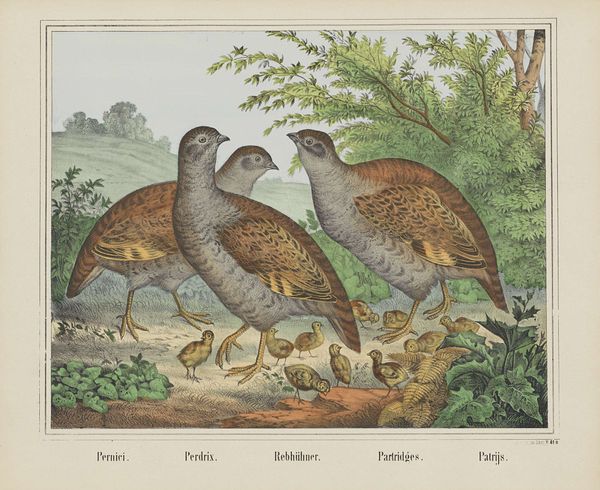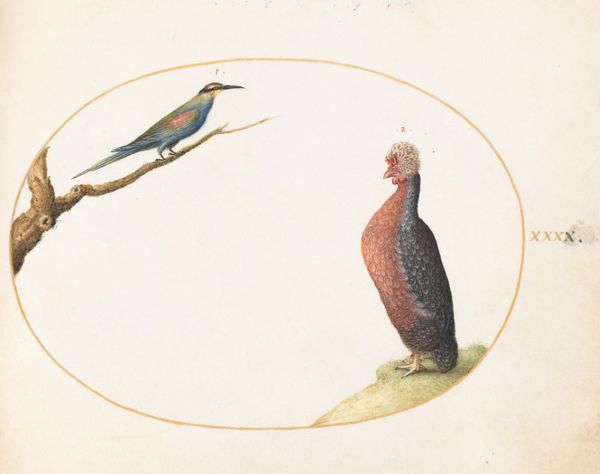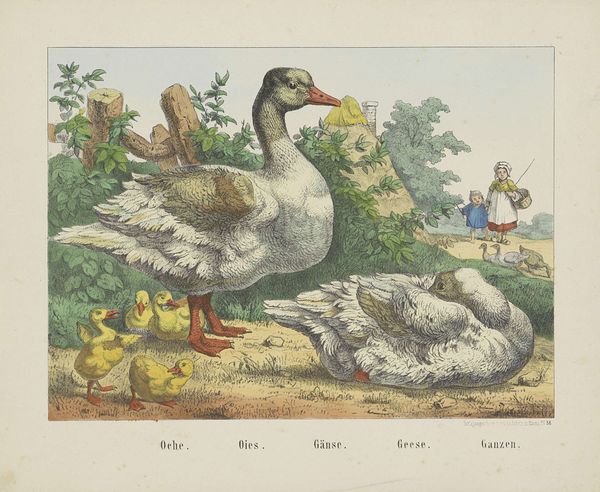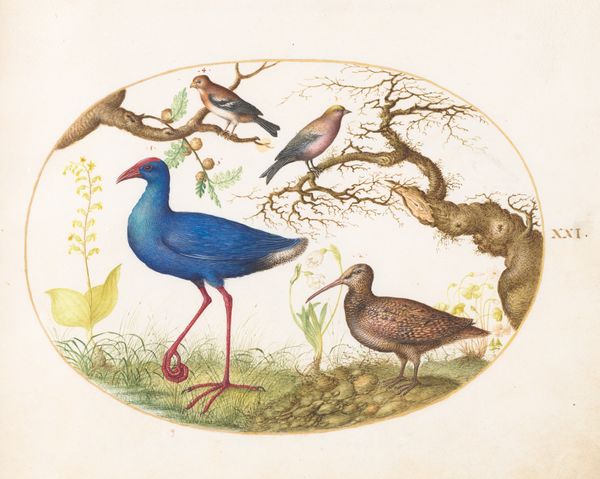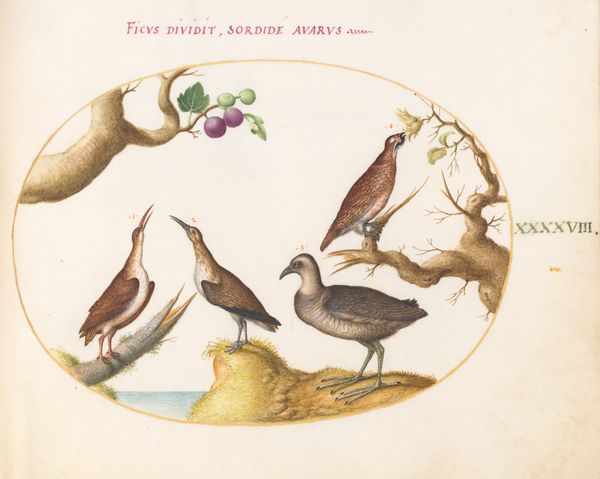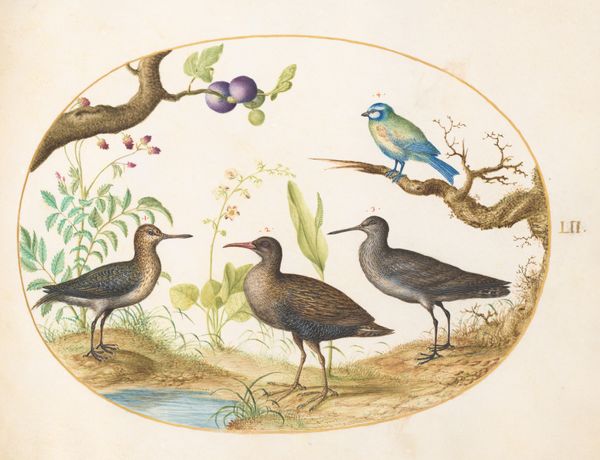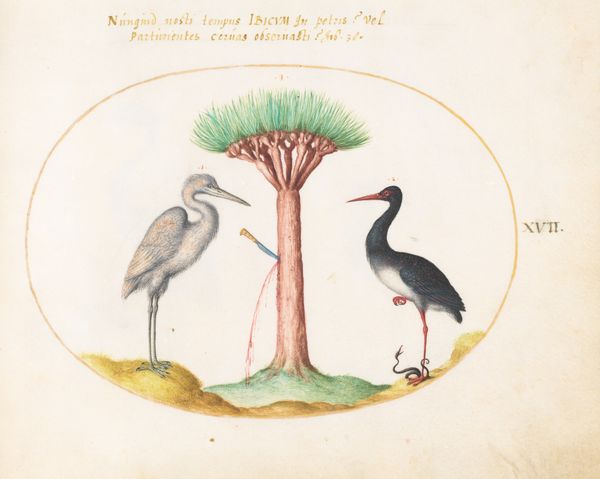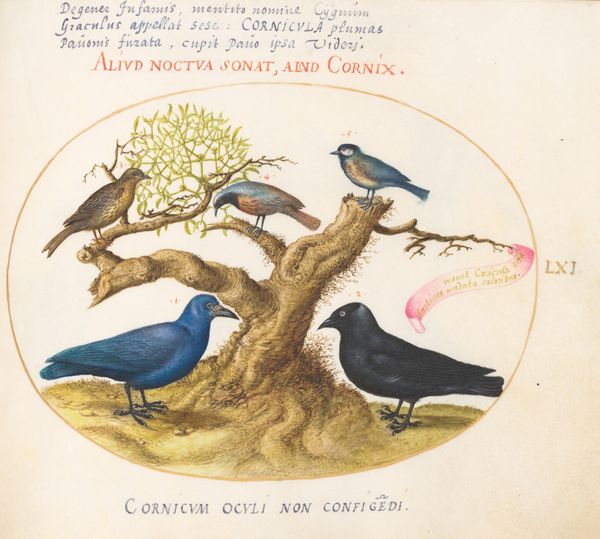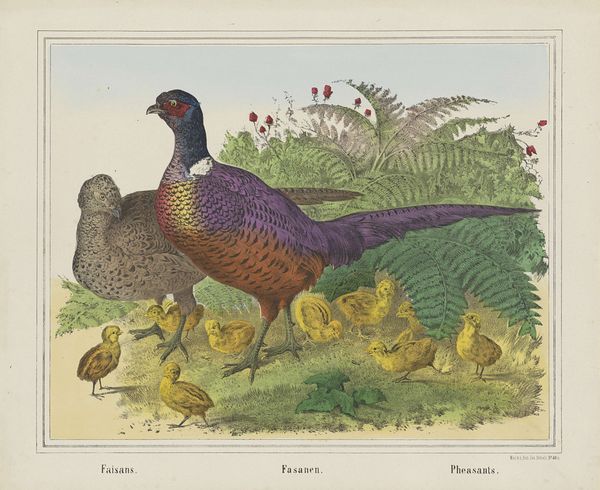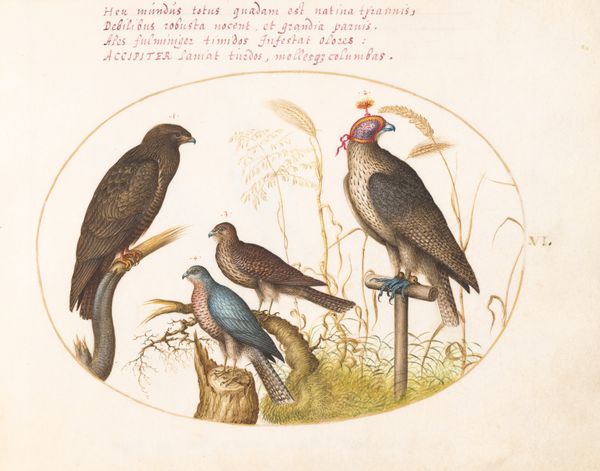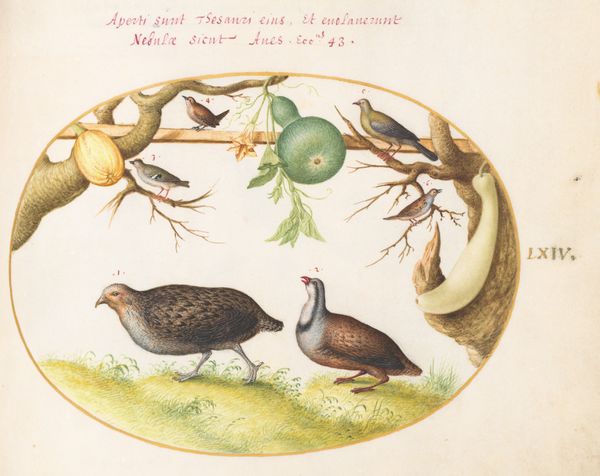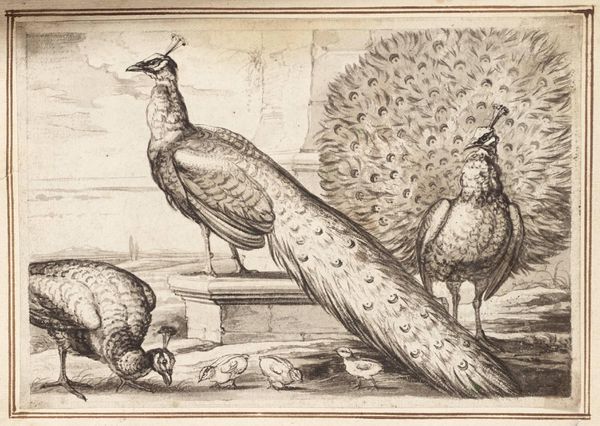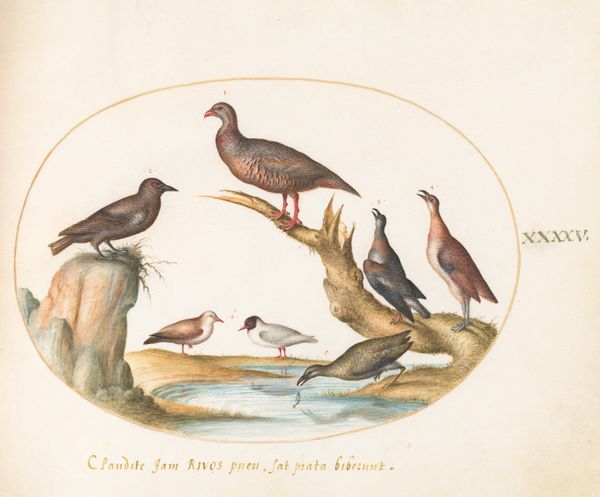
print, watercolor
#
animal
# print
#
landscape
#
watercolor
#
watercolour illustration
#
watercolor
Dimensions: height 348 mm, width 429 mm
Copyright: Rijks Museum: Open Domain
Curator: Allow me to introduce you to "Paon. / Pavone. / Pfau. / Peacock. / Paauw," a delightful 19th-century watercolor print currently residing here at the Rijksmuseum, created by the studio of Joseph Scholz. Editor: It's quite charming! My first impression is of gentle whimsy, a captured moment in a bizarre, pastel dream. There's a real theatricality to the peacock’s display, yet the subdued colors keep it from being gaudy. And that bulldog! He doesn't seem at all impressed by the peacock's display. Curator: The composition indeed invites such interpretation. We see a convergence of naturalism and formalism here, in how the artist arranges elements within the pictorial plane. Note the meticulous detail given to the plumage, contrasted by the relatively flattened rendering of the background, creating an interplay of depth and surface. And you rightly point to the canine element; its presence complicates our reading. Is it simply part of the landscape, or a commentary? Editor: Perhaps a bit of both. The bulldog is such a lumpen form against the airy display of feathers. Makes you wonder what, if anything, truly impresses him. Are we meant to identify with the dog? Is the artifice of the peacock just so much show? Or maybe, I wonder if it's an inside joke, Scholz's own bulldog? He clearly has a very expressive face, if one looks at it closely! Curator: I'm intrigued by your emphasis on narrative elements. We mustn't disregard the function of chromatic harmony here. The use of watercolor allows for subtle gradations of tone, modulating between cool blues and greens, offset by the warmer ochre tones. Such choices underscore the print’s decorative purpose while retaining a sense of fidelity to natural forms. Editor: Of course. The control and application of the medium are crucial. And you’re right—that careful balancing act between observation and decorative intent creates its distinct character. This really speaks to that era’s obsession with cataloging and exoticism all rolled into one light package. What else could we ask for! Curator: Indeed. By exploring its structure and historical context, we gain insight into both its aesthetic construction and cultural significance. Editor: And I’ll simply add that spending even a short time looking carefully opens doors in ways you can’t predict, prompting all sorts of wonderful flights of fancy, so I invite all of our visitors to spend a few minutes dreaming, looking at this beautiful display!
Comments
No comments
Be the first to comment and join the conversation on the ultimate creative platform.
